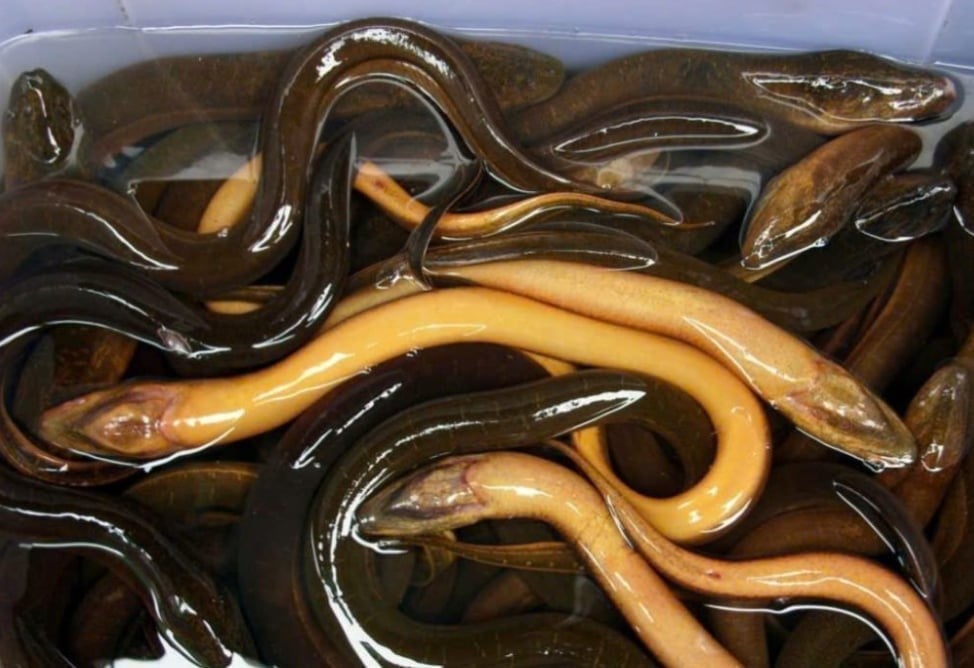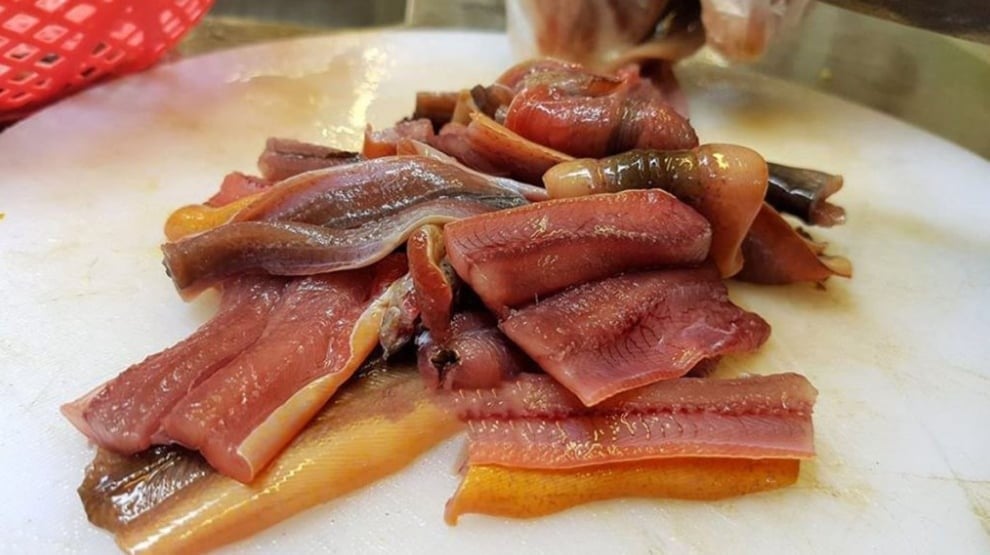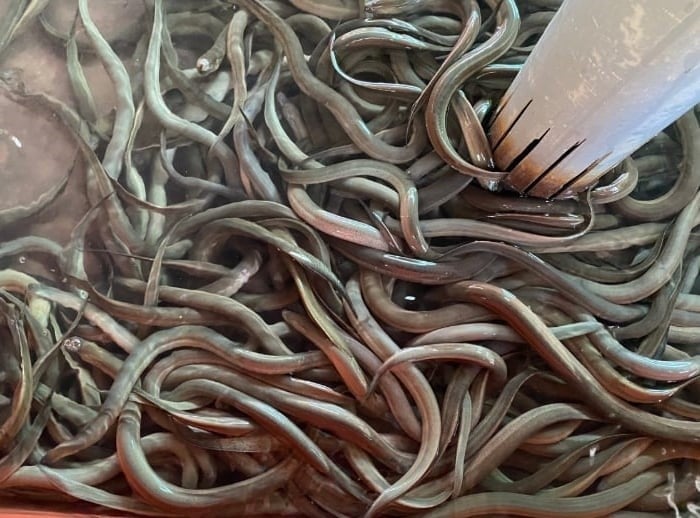September 26, 2025 | 13:08 GMT +7
September 26, 2025 | 13:08 GMT +7
Hotline: 0913.378.918
September 26, 2025 | 13:08 GMT +7
Hotline: 0913.378.918
According to statistics from the Agency for Foreign Trade (Ministry of Industry and Trade), Vietnam's eel export turnover reached approximately USD 1.7 million in 2023, driven primarily by increasing demand from markets such as the U.S., Japan, and South Korea.
In just the first 10 months of 2024, eel export value nearly doubled to USD 2.98 million, with an export volume of around 670 tons. Among these, China is currently the largest consumer market, importing approximately 300 tons of eel, accounting for nearly half of the total export volume. Japan imported about 50 tons, the U.S. imported 38 tons, and South Korea imported 33 tons.

Vietnam's eel export turnover increased sharply.
One key factor helping Vietnam’s eel farming industry expand exports is the strong development of the mud-free farming model using composite tanks. Unlike traditional earthen pond methods with bottom mud layers, this model allows farmers to control better environmental factors such as temperature, pH levels, water quality, and diseases.
In addition, the absence of bottom mud also helps reduce the risk of waste accumulation, enhances disease prevention, shortens the farming cycle, and ensures food safety and hygiene.
It is also easier to manage eels raised in composite tanks in terms of feed rations, stocking density, and health monitoring. As a result, product quality has significantly improved, meeting the requirements of importing markets, especially regarding antibiotic residues and traceability.
Currently, retail prices for eel in Vietnam range from USD 3.39 to USD 8.62/kg, depending on quality and farming method. Eels farmed by mud-free technology are receiving higher appreciation in terms of appearance and uniformity, contributing to increased export value.
Despite positive signals, Vietnam's eel industry still faces numerous challenges in conquering demanding markets.
Technical barriers are becoming increasingly stringent, particularly in the U.S. and the EU, where seafood products must meet international certifications such as ASC (Aquaculture Stewardship Council) and HACCP (Hazard Analysis and Critical Control Points). These markets also require transparent traceability systems and strict compliance with environmental and food safety regulations.

Vietnamese seafood products, including eel, are committed to ensuring clear origin, adhering to transparent traceability standards, and achieving international certifications to guarantee quality and safety.
According to a report by the Sustainable Trade Initiative (IDH) organization, small and medium-sized enterprises in Vietnam’s eel industry still face numerous difficulties in accessing international standards.
Most eel farming households remain small-scale, lack linkage, and operate without synchronous quality control processes. The shortage of transparent traceability systems makes Vietnamese eels less trusted than those from countries like Thailand, Japan, or South Korea.
Additionally, due to eels' biological characteristics, which include difficulty using artificial reproduction methods, most seed stock is still sourced from the wild. This poses risks of resource depletion and also affects productivity, quality, and stability of supply.
Given these challenges, building a sustainable chain linking farming, processing, and export is imperative if Vietnam wishes to turn eel into a key sector in seafood exports. The mud-free farming model plays a pivotal role, not only in improving product quality but also in synchronizing the production process from breeding, feeding, and caring to harvesting and packaging. Industry experts and enterprises have proposed several solutions.
First, it is necessary to invest in mud-free eel farming technology and encourage farmers to transition to composite tanks equipped with recirculating filtration, temperature regulation, and oxygen control systems. These systems help control environmental factors, minimize disease outbreaks, and increase survival rates.
Farming facilities should also be encouraged to shift toward farm-level operations and apply digital technologies for growth monitoring and electronic traceability.

Mud-free eel farming in composite tanks brings high profits for farmers.
Along with that, a unified traceability system needs to be established, from breed, feed, and veterinary drugs to harvesting and processing. Only when consumers can follow the full journey of eels via QR code application and farm management software that fully records information from stocking to harvesting and export will trust in Vietnamese products truly be strengthened.
Another key factor is training and supporting enterprises in obtaining international certifications. Collaborative programs involving the government, development organizations (such as IDH and GIZ), associations, and enterprises should focus on guiding good aquaculture practices, assisting with technical documentation, and accompanying businesses throughout the inspection and certification process. Potential localities, such as An Giang, Can Tho, and Bac Lieu, should be selected as pilot sites for the "four-party linkage" model, which connects farmers, the state, scientists, and enterprises.
At the same time, public–private partnerships should be encouraged to develop high-quality artificial breeds. Only by becoming self-sufficient in breeding can Vietnam’s eel industry reduce its dependence on wild-caught sources and ensure stability for large-scale production.
Finally, market diversification also plays a crucial role. In addition to traditional markets such as China, the U.S., Japan, and South Korea, enterprises should seek opportunities in the Middle East, Africa, and regions with large Asian communities, with a strong demand for eel-based cuisine.
Vietnamese eel has large potential to become a key export item in the fisheries industry. However, realizing this potential will require a concerted effort from all relevant parties to improve product quality, meet international standards, and build a sustainable linkage chain.
Translated by Thu Huyen

(VAN) Vietnam's fruit and vegetable exports hit a new milestone in August, reaching over USD 951 million, the highest monthly figure ever recorded for the sector.

(VAN) Facing barriers from major markets such as the US and the EU, Vietnam’s tuna enterprises are striving to find new markets.

(VAN) High yields lead to high nutrient removal rates, but next year, nutrient replacement and feeding a new crop comes at a higher cost.
/2025/09/17/4524-1-142258_778.jpg)
(VAN) A 50% reciprocal tariff imposed by the U.S. has pushed India's shrimp industry into crisis. Vietnamese shrimp could increase market share and seize the opportunity to promote its image as safe and sustainable.

(VAN) Mr. Nguyen Hong Dien, Vietnam’s Minister of Industry and Trade, sent a letter to the U.S. Secretary of Commerce, urging an objective review of seafood trade.

(VAN) Organic coffee farms in the Central Highlands have reached global markets, carrying with them the sweetness of the red basalt soil and the inspiring story of positive change for the local communities.
/2025/09/16/3618-anh-4-232727_78.jpg)
(VAN) In the first eight months of 2025, Dong Thap's exports have made a spectacular breakthrough. Particularly, rice exports achieved outstanding growth, bringing practical benefits to farmers.